RAADS-R Test

Understanding the RAADS-R and Its Significance in Adult Autism Diagnosis
The RAADS-R (Ritvo Autism Asperger Diagnostic Scale–Revised) stands as a pivotal tool in the landscape of autism spectrum disorder (ASD) assessment for adults. Developed to bridge the diagnostic gap in adult autism screening, especially for individuals who might have previously escaped diagnosis, the RAADS-R provides clinicians and researchers with a reliable measure of autistic traits. Its comprehensive design encompasses key areas affected in ASD, making it an essential part of a multi-faceted diagnostic process.
What is the RAADS-R Test and How is It Used in Diagnosing Autism in Adults?
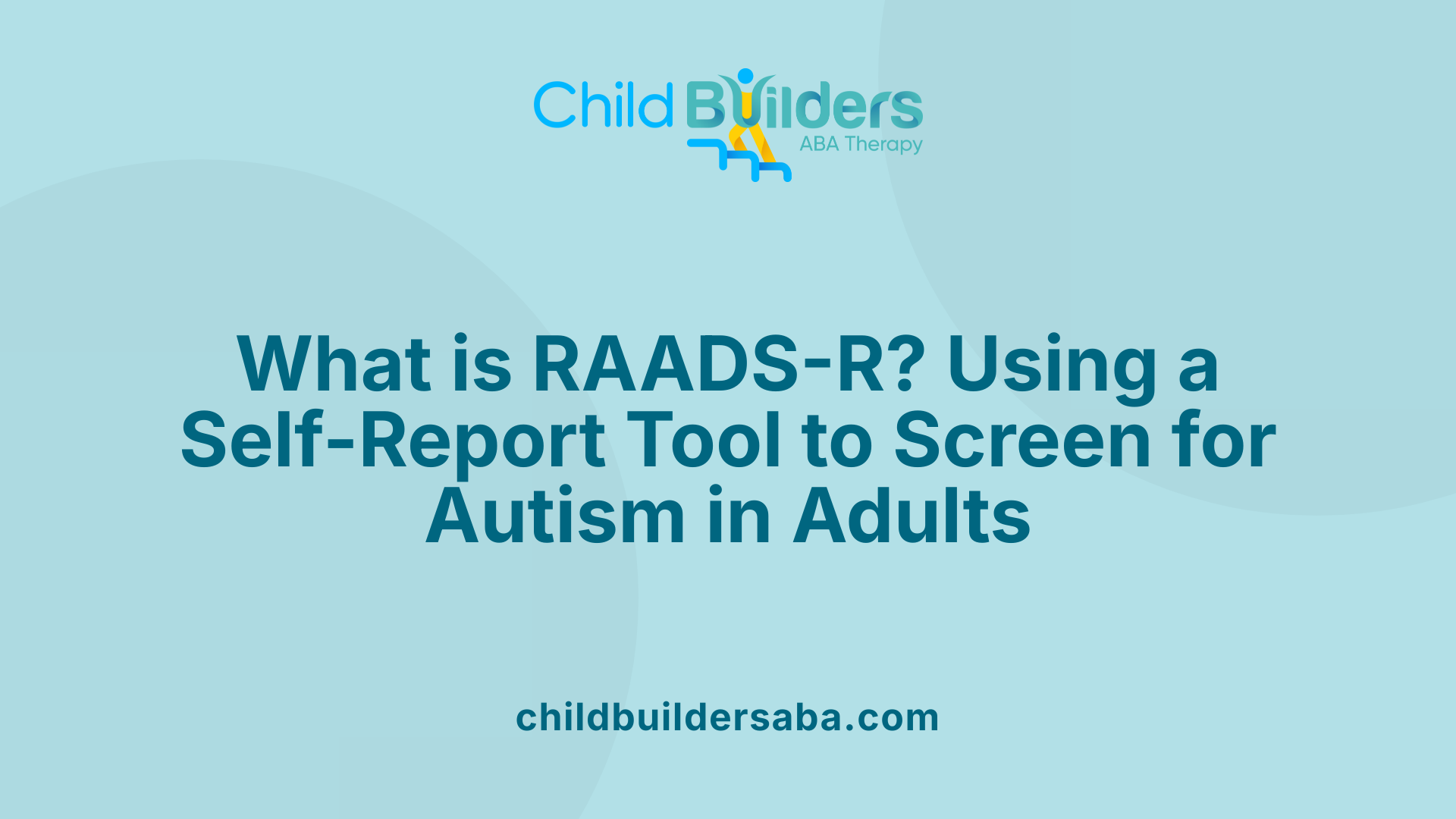
What is the RAADS-R?
The RAADS-R, or Ritvo Autism Asperger Diagnostic Scale – Revised, is a comprehensive self-report questionnaire designed to assist in screening for autism spectrum disorder (ASD) among adults. Created by Dr. Riva Ariella Ritvo and colleagues in 2011, this 80-item tool helps identify autism traits in individuals aged 18 and above. It is widely used by clinicians to support diagnosis, especially in cases where autism may have gone undetected earlier in life.
The test evaluates four critical areas aligned with DSM-5 criteria: social relatedness, circumscribed interests, language, and sensory-motor behaviors. These domains comprehensively cover the core symptoms associated with ASD, including difficulties in social interactions, intense interests, communication issues, and sensory sensitivities. Each question is designed to gauge the severity and frequency of specific behaviors and experiences, considering both current and childhood behaviors.
Purpose as a Screening Tool
The primary role of the RAADS-R is to act as a screening instrument. It helps clinicians determine whether an adult might exhibit traits consistent with autism spectrum disorder. A score of 65 or higher indicates a high probability of ASD, with research showing that no neurotypical adults score above this threshold.
It's important to recognize that the RAADS-R is not a definitive diagnostic tool. Instead, it provides valuable information that supports further professional assessment. The high sensitivity (97%) and full specificity (100%) established through validation studies mean that the test can accurately distinguish between individuals with and without ASD traits. However, it should always be used in conjunction with clinical interviews and other diagnostic procedures.
Target Population and Scope
The RAADS-R is tailored for adults aged 16 and older, specifically those without intellectual disabilities (IQ >= 80). The tool is especially useful for adults who may experience subclinical or mild symptoms that have not led to a formal diagnosis earlier in life. It is applicable across various cultural contexts, having been validated in multiple countries with high reliability. The test is currently available only in English and Swedish online, with limited translations for clinical use.
Assessment Areas and Content
The questionnaire covers four main domains:
- Language: Examines communication difficulties and history.
- Social Relatedness: Assesses social behaviors and understanding.
- Circumscribed Interests: Looks at the intensity and focus of interests.
- Sensory-Motor: Evaluates sensory sensitivities and motor behaviors.
Participants respond to statements on a Likert scale, reflecting the degree of experience or difficulty. This comprehensive approach helps paint a detailed picture of autism-related traits in adulthood.
Time Required and Administration Details
Completing the RAADS-R typically takes between 10 to 30 minutes. It can be self-administered online, but it is recommended to be completed under the guidance of a clinician. The test is usually used as part of a broader diagnostic evaluation process, which includes interviews and other assessment measures.
While the instrument is designed for efficient screening, clinicians should interpret the scores cautiously. A score above 65 suggests the presence of autism traits, but final diagnosis requires professional judgment based on a full clinical assessment.
Role in Conjunction with Clinical Judgment
Despite its high accuracy, the RAADS-R is not a standalone diagnostic tool. Instead, it serves as an adjunct to comprehensive clinical evaluations by mental health professionals. The test helps identify individuals who may benefit from further assessment and supports understanding of their behavioral patterns.
In summary, the RAADS-R offers a reliable and efficient method for screening autism spectrum disorder in adults. Its validated structure and sensitivity make it a valuable resource in clinical settings, ultimately aiding in earlier identification and intervention for adults on the spectrum.
What is the Accuracy and Validity of the RAADS-R Test?
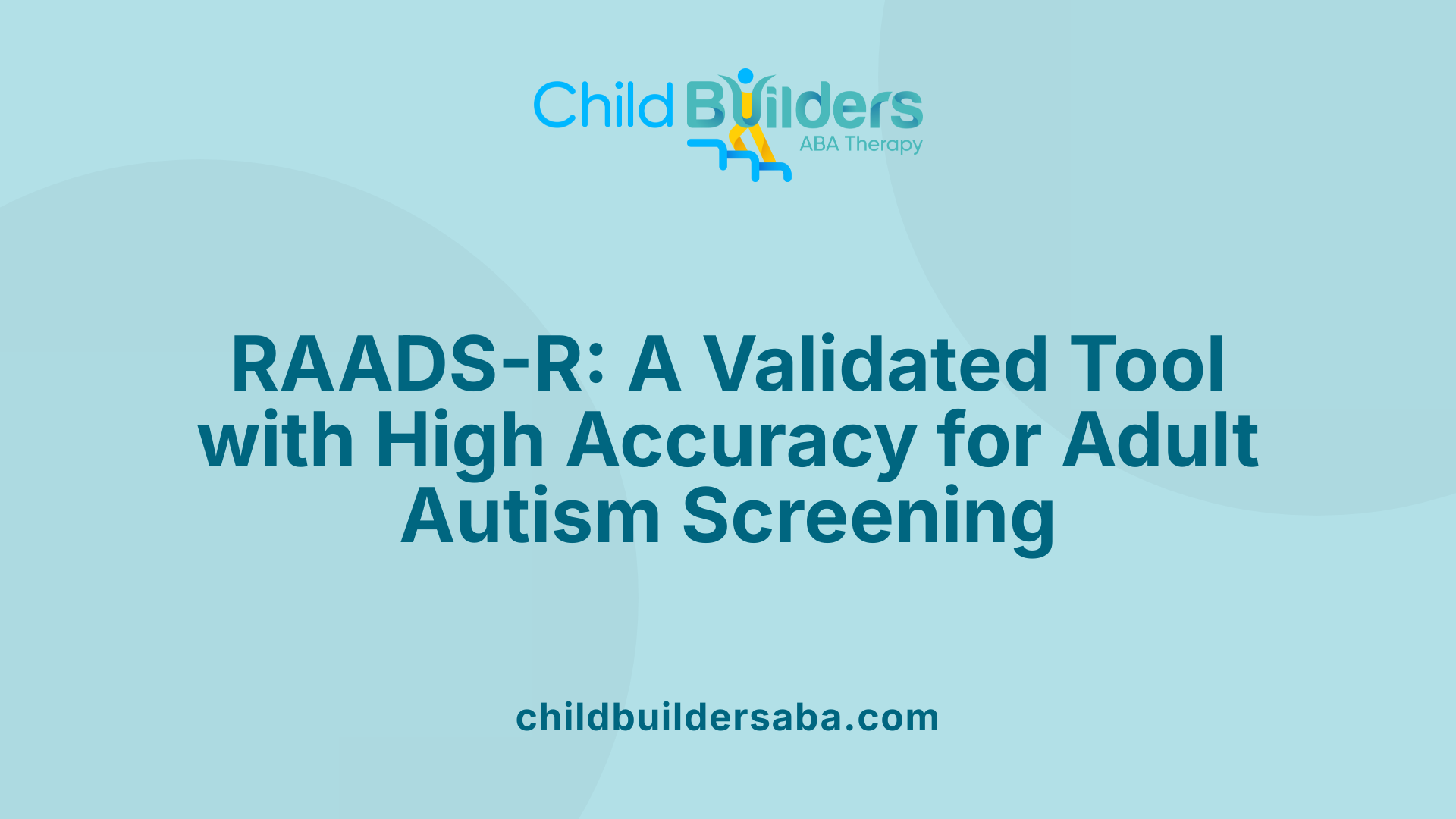
What is the accuracy and validity of the RAADS-R test?
The RAADS-R, or Ritvo Autism Asperger Diagnostic Scale–Revised, is a widely utilized screening tool for adult autism spectrum disorder (ASD). Its development aimed to identify autistic traits that might otherwise go unnoticed in adults, enabling earlier intervention and support.
The test exhibits outstanding psychometric properties, notably a sensitivity rate of 97% and a perfect specificity of 100%. This means that it correctly identifies 97% of individuals with ASD traits (true positives), while it accurately excludes those without ASD (true negatives). Such high figures underline its effectiveness in distinguishing autistic traits from other conditions.
Reliability, an essential component of a test's validity, is also strongly supported. The RAADS-R has demonstrated excellent test-retest reliability, with a Pearson correlation coefficient of 0.987, indicating very little variation in results over time when administered repeatedly under similar conditions.
Construct and concurrent validity have also been established. The scale's results correlate highly with other established instruments like the Social Responsiveness Scale-Adult (SRS) and the Autism Spectrum Quotient (AQ), supporting its ability to measure the intended constructs reliably. These correlations validate the RAADS-R’s utility as a supportive screening instrument. It assesses core areas such as social relatedness, language, sensory-motor functions, and circumscribed interests—all aligning with DSM-5 diagnostic criteria.
Despite its strong validity indicators, the RAADS-R should complement, not replace, comprehensive clinical assessments. It acts as an adjunct to professional evaluation, guiding clinicians toward further testing or diagnosis.
In summary, the RAADS-R is a trustworthy tool with proven accuracy and validity, making it an invaluable part of the adult autism screening process. Its high sensitivity and specificity endorse its effectiveness, but proper interpretation should always involve qualified healthcare professionals, ensuring accurate diagnosis and appropriate support.
For further validation details and research results, a search query like "RAADS-R validity reliability autism screening results" can provide additional in-depth information.
How is the RAADS-R Test Scored and Interpreted?
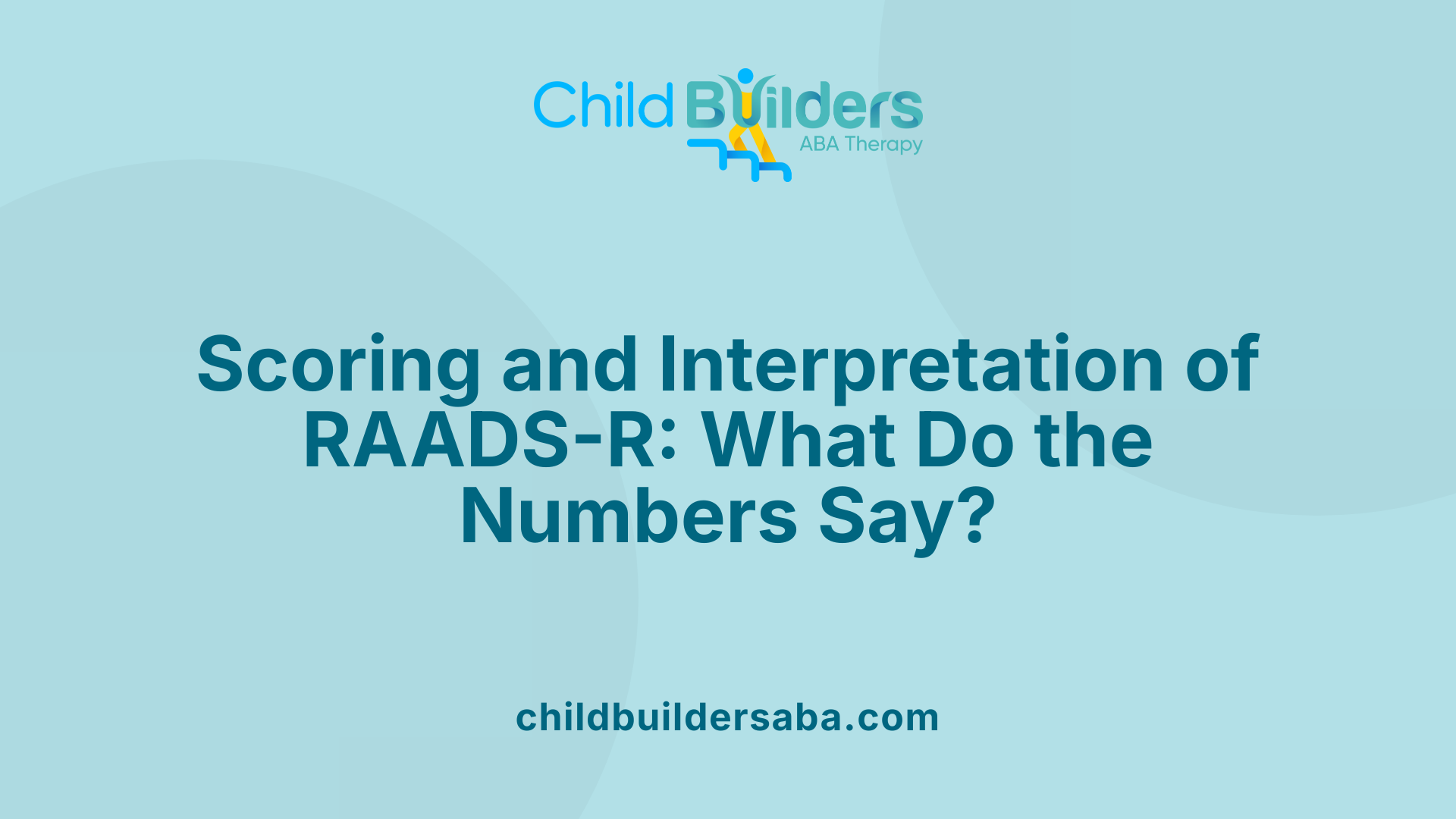
Scoring methodology
The RAADS-R (Ritvo Autism Asperger Diagnostic Scale–Revised) consists of 80 statements designed to quantify autism-related traits in adults. Each statement is answered using a Likert scale, which assesses the severity or frequency of behaviors, experiences, or preferences both in the present and during childhood. Responses are assigned points, and these are summed across all items to produce a total score. The scoring process considers responses to four main domains: Language, Social Relatedness, Sensory–Motor issues, and Circumscribed Interests. The total possible score ranges from 0 to 240, with higher scores indicating more significant autism-like traits.
Score ranges and cut-offs
Research indicates that a score of 65 or higher suggests a likelihood of autism spectrum disorder (ASD). In the validation studies, no neurotypical adults scored above this threshold, affirming its diagnostic utility for screening purposes. Scores below 65 typically indicate fewer autism traits, with lower scores closely associated with neurotypical development. A score approaching 90 reflects notable autism characteristics, but it is not definitive without further clinical assessment. Conversely, very high scores, such as 160 or above, strongly point to the presence of substantial autistic traits.
Interpretation of scores
The interpretation of RAADS-R scores hinges on the established cutoff of 65. Scores at or above this mark support the possibility of ASD, prompting further professional evaluation. Specifically, scores around 25 usually suggest no significant autism-related traits, whereas scores exceeding 130 indicate a high likelihood of autism. The scale's validation shows excellent sensitivity of 97% and perfect specificity of 100%, meaning it is highly reliable for screening but not a diagnostic instrument on its own. It helps identify individuals who benefit from detailed clinical assessments rather than providing a definitive diagnosis.
Implications of high vs. low scores
A low score, typically below 25, generally reflects minimal traits associated with ASD, suggesting that a diagnosis is unlikely. In contrast, high scores—especially those above 90—correlate strongly with the presence of autistic features and support the need for a comprehensive clinical evaluation. Very high scores can guide clinicians to consider autism as a core aspect of the individual's profile, whereas intermediate scores require nuanced interpretation within the broader clinical context.
Role of clinical judgment
Despite its robustness, the RAADS-R should not be used as a standalone diagnostic tool. Its results are intended to support and inform clinical judgment. Healthcare professionals consider the test scores alongside developmental history, behavioral observation, and other diagnostic assessments. The tool is valuable for preliminary screening, helping to identify adults who might otherwise escape diagnosis due to subclinical or less obvious symptoms. Ultimately, a qualified clinician conducts a thorough evaluation to confirm or rule out ASD, integrating RAADS-R findings with other diagnostic information.
Clinical Applications and Role in Autism Spectrum Disorder Diagnosis
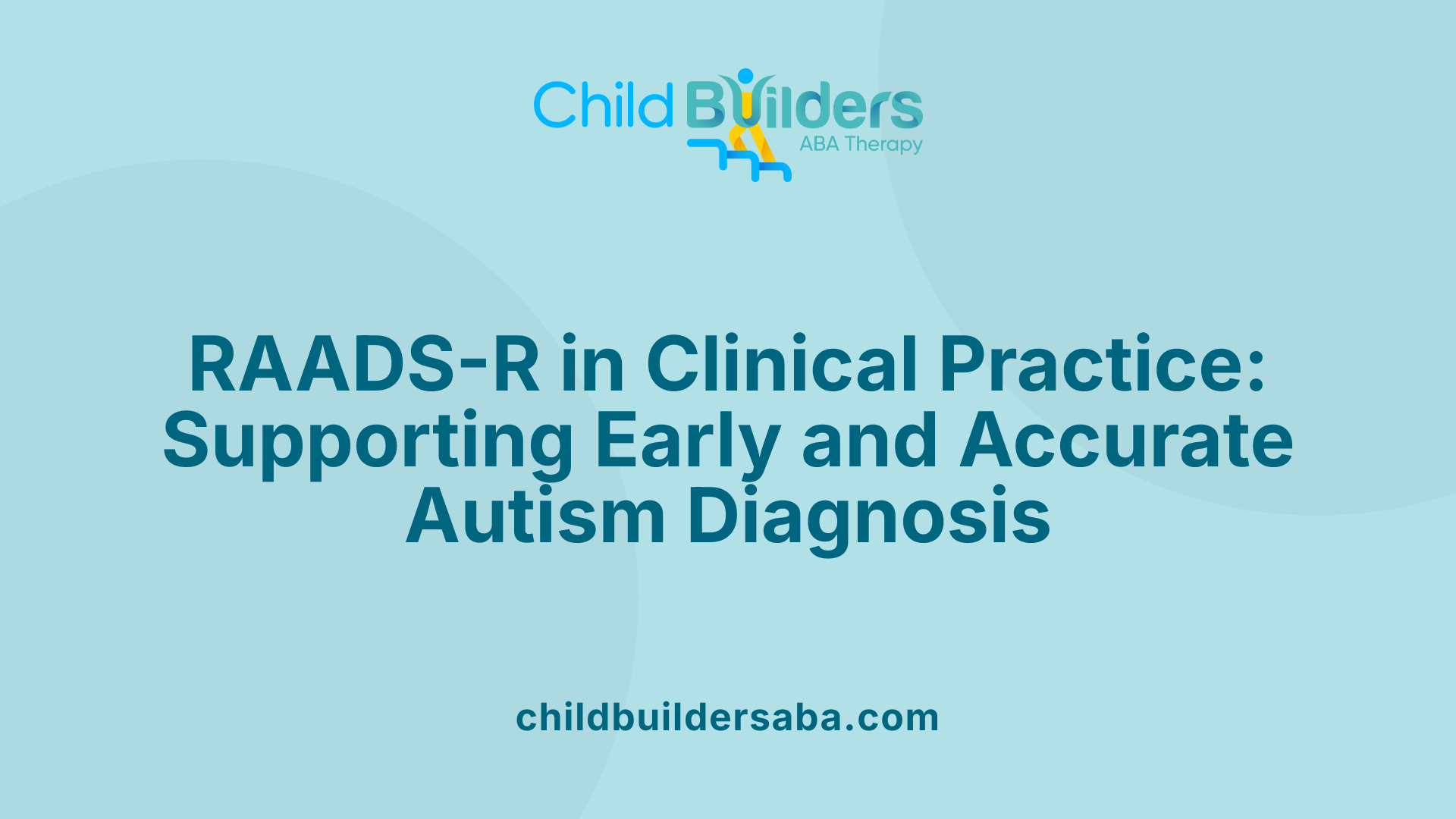
How is the RAADS-R used in clinical assessment?
The RAADS-R serves as an important screening instrument in the diagnosis of autism spectrum disorder (ASD) among adults. This self-report questionnaire, developed by Riva Ariella Ritvo and colleagues in 2011, is designed to identify traits associated with ASD in individuals aged 16 and above. It covers key symptom domains such as social relatedness, circumscribed interests, sensory-motor behaviors, and language. The tool provides clinicians with a structured way to gauge the presence and severity of autism-related traits, which is especially valuable in cases where ASD may have gone undetected earlier in life.
The assessment involves answering 80 statements that reflect behaviors and experiences from childhood and present times, with responses rated on a Likert scale. The total score ranges from 0 to 240, with scores above 65 strongly indicating the likelihood of autism. Its high sensitivity of 97% and perfect specificity of 100% make it a dependable screening step in the diagnostic process.
Who is the target population for the RAADS-R?
The RAADS-R is specifically tailored for adults aged 16 and older who have an IQ of 80 or above. It is most effective in individuals who may have subclinical or previously undiagnosed autism, including those with level 1 ASD. The scale is also used with adults in clinical settings such as mental health clinics, neurodevelopmental assessments, and research studies focused on adult ASD populations.
Historically, many adults with ASD remain undiagnosed due to overlapping symptoms with other mental health conditions or subdued traits. The RAADS-R helps fill this gap by providing insights into ASD-related behaviors that might not be evident in daily interactions but are significant for diagnosis.
How does the RAADS-R integrate with other diagnostic tools?
While the RAADS-R offers high accuracy in screening for autism traits, it is not a standalone diagnostic instrument. Its primary role is to support clinicians in identifying individuals who would benefit from a comprehensive assessment. Typically, the results are combined with clinical interviews, direct behavioral observations, and other standardized measures such as the Autism Spectrum Quotient (AQ) or the Social Responsiveness Scale-Adult (SRS).
This integration enhances diagnostic precision and helps distinguish ASD from other psychiatric conditions like social anxiety disorder or ADHD, which may have overlapping features.
How does the RAADS-R contribute to early and accurate diagnosis?
Early detection of ASD in adults can greatly improve intervention outcomes. The RAADS-R, with its validated high sensitivity and specificity, assists clinicians in identifying those at risk for ASD who might otherwise remain undiagnosed. Its standardized scoring and clear threshold (scores of 65 or higher suggest autism) allow for objective evaluation.
This tool aids in reducing diagnostic delays, supporting prompt access to tailored interventions, therapies, and support services. Moreover, recognizing autism traits in adults helps in understanding their behaviors, challenges, and needs, ultimately promoting better mental health and social outcomes.
What are the limitations and guidelines for using the RAADS-R?
Despite its strengths, the RAADS-R has limitations that clinicians should consider. It relies on self-reporting, which can be affected by an individual’s insight, honesty, and understanding of questions. Cultural differences and language barriers may impact its accuracy, and currently, its online version is predominantly available in English, with limited translations.
It is essential to interpret scores within the broader clinical context. A high score suggests the need for further assessment rather than a definitive diagnosis. Conversely, a low score does not necessarily rule out ASD, particularly if social or communication challenges are subtle.
Clinicians should use the RAADS-R as an initial screening step, followed by comprehensive clinical evaluations. It’s also recommended that the individual completing the questionnaire provides honest, reflective responses or completes it under supervision to ensure clarity.
In conclusion, the RAADS-R enhances the diagnostic process for adult ASD by providing a reliable, standardized measure of autism traits. Its application, combined with other clinical assessments, facilitates early, accurate identification leading to better support and intervention for adults on the spectrum.
Educational Background and Context of Autism Screening Tools for Adults
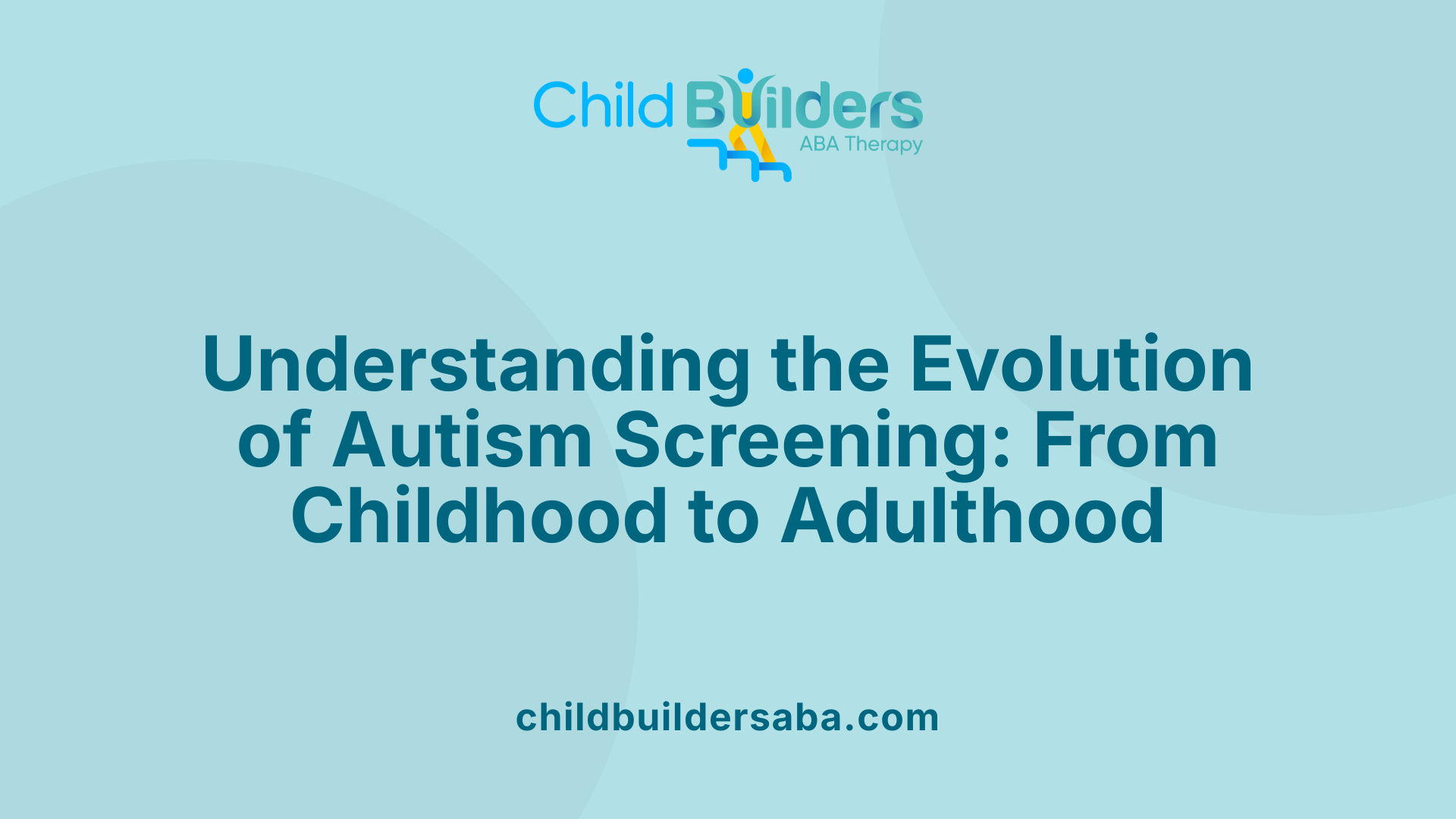
What is the development history of autism screening tools for adults?
The evolution of autism screening tools for adults has been driven by the need to identify individuals who may have been overlooked during childhood. Traditionally, autism assessments focused on children, leaving a gap for adults who exhibit traits of ASD but lack formal diagnosis.
In response, researchers and clinicians developed specialized tools, culminating in the creation of the RAADS-R in 2011 by Dr. Riva Ariella Ritvo and colleagues. This instrument was designed to fill a crucial gap by providing a reliable way to screen for autism traits in the adult population.
The RAADS-R was grounded in current diagnostic criteria, including DSM-5, and integrated insights from previous versions of autism scales, such as the original RAADS and the RAADS-14. Its development reflected a growing awareness of the persistence of autistic traits into adulthood and the importance of early and accurate detection.
How has the screening process for adult autism evolved over time?
Previously, assessments relied heavily on clinical interviews and observational methods, which could be time-consuming and require specialized training. Recognizing the need for more accessible screening, the focus shifted towards self-report questionnaires.
The RAADS-R is a prime example, featuring 80 questions that adults can complete independently, making it a practical screening tool. Its high sensitivity (97%) and perfect specificity (100%) demonstrated through validation studies marked significant progress in the reliability of adult autism screening.
Modern developments continue to refine these tools. This includes efforts to translate and adapt assessments for different cultures and languages, increase accessibility via online platforms, and improve the accuracy and breadth of assessment domains.
How does RAADS-R compare with other autism assessment instruments?
Compared to previous instruments and newer tools, RAADS-R is distinguished by its comprehensive nature, covering four key domains—social relatedness, circumscribed interests, language, and sensory-motor skills—and its alignment with DSM-5 criteria.
Other instruments like the Autism Spectrum Quotient (AQ), SRS, and EQ are also used, but RAADS-R offers a specialized focus on adult populations, with validated cut-off scores indicating likely ASD traits.
The validated high sensitivity and specificity of RAADS-R, especially at a threshold of 65 or higher, make it one of the most accurate screening tools available for adults.
Why is early detection of autism in adults important?
Early detection can significantly improve outcomes by facilitating timely access to support and interventions, which can enhance social functioning, employment, and overall quality of life.
Many adults remain undiagnosed due to atypical presentations, masking behaviors, or lack of awareness prior to recent efforts in screening.
Tools like the RAADS-R help identify those at risk who may benefit from further professional evaluation, potentially leading to formal diagnosis and targeted support.
What are some limitations and challenges in using these screening tools?
Despite their high accuracy, screening tools such as the RAADS-R have limitations. They rely on self-report, which can be influenced by factors like self-awareness, understanding of questions, or social desirability biases.
False positives and the possibility of misinterpreting questions can occur, especially in culturally diverse populations where language nuances may affect responses.
Moreover, while RAADS-R is a strong screening instrument, it cannot replace a comprehensive clinical assessment. Diagnosis requires detailed interviews, observations, and possibly additional testing.
Cultural differences and limited availability of validated translated versions also pose challenges for widespread and equitable use.
Overall, these tools serve as an essential first step in the diagnostic pathway but must be used alongside professional judgment and assessment.
Summary and Future Perspectives
The RAADS-R stands out as a robust and validated screening instrument that has significantly contributed to adult autism assessment. Its high accuracy and comprehensive evaluation of key ASD traits make it an invaluable adjunct to clinical judgment. As awareness of adult autism grows, ongoing efforts to refine such tools—including translations, cultural adaptations, and integration with observational measures—will enhance their utility. Ultimately, the RAADS-R supports earlier diagnosis, targeted interventions, and a better understanding of autism in adults, although it remains part of a broader diagnostic process involving professional assessment, clinical interviews, and possibly observational testing.
References
- RAADS–R | Embrace Autism
- RAADS-R - National Autism Resource Centre (NARC)
- Ritvo Autism and Asperger Diagnostic Scale - Wikipedia
- Autism tests - Embrace Autism
- The RAADS-R: Autism Self-Assessment for Adults - Prosper Health
- The Ritvo Autism Asperger Diagnostic Scale-Revised (RAADS-R)
- Ritvo Autism & Asperger Diagnostic Scale (RAADS-14)
- RAADS-R Test: Understanding the Test for Better Results
- The Ritvo Autism Asperger Diagnostic Scale-Revised (RAADS-R)



.jpg)

































































































